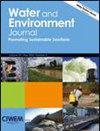简短教育计划对改善人们对净化循环水态度的影响
IF 1.8
4区 环境科学与生态学
Q4 ENVIRONMENTAL SCIENCES
引用次数: 0
摘要
随着大都市社区对高效用水的需求日益增长,一个市政水区制定了一项体验式教育计划,以帮助客户接受净化再生水(PRW)。该项目包括参观一个小型净化设施,该设施不向用户提供饮用水,而是作为一个示范中心。两项实证研究证明了该教育项目的积极影响。在研究 1 中,我们采用了前/后研究设计,考察了 70 名被要求参观示范中心的本科生对 PRW 的态度评分。与参观前相比,这些参与者在参观后表达了更积极的态度(t = 8.76,df = 68,p < 0.001,d = 1.06),这表明示范中心对公共厕所工程的态度产生了积极影响。在研究 2 中,通过实验设计,比较了接受示范中心信息参观的本科生(n = 27)与在收集数据后才参观示范中心的学生(n = 30)对公共厕所和垃圾站的态度。与未参观示范中心的学生相比,参观示范中心的学生在自我报告的公共工程态度测量中表达了更积极的态度(t = 2.24,df = 50.0,p = 0.03,d = 0.60);然而,两组学生在取样水量上没有差异(t = 0.29, df = 55.65, p = 0.77, d = 0.08)或在喝水时与快乐(t = 1.34, df = 53.89, p = 0.19, d = 0.38)或厌恶(t = 0.86, df = 53.14, p = 0.40, d = 0.39)相关的面部表情方面没有差异。这些研究共同证明了体验式示范中心在提高人们对净化再生水的积极态度方面的有效性。本文章由计算机程序翻译,如有差异,请以英文原文为准。
The effect of a brief educational programme for improving attitudes about purified recycled water
With a growing need for efficient use of water in a large metropolitan community, a municipal water district has developed an experiential educational programme to help customers develop acceptance of purified recycled water (PRW). This programme involves touring a small‐scale working purification facility that does not provide consumer drinking water but serves as a demonstration centre. Two empirical studies demonstrated the positive impact of this educational program. In Study 1, a pre‐/post‐research design was used to examine scores on a measure of attitudes about PRW for 70 undergraduate students who were asked to tour the demonstration centre. These participants expressed more favourable attitudes after the tour than they expressed before the tour (t = 8.76, df = 68, p < 0.001, d = 1.06), suggesting that the demonstration centre positively impacted attitudes about PRW. In Study 2, an experimental design allowed for a comparison of attitudes about PRW for undergraduate students who were given an informational tour of the demonstration centre (n = 27), compared to students who did not tour the demonstration centre until after their data were collected (n = 30). Participants who toured the demonstration centre expressed more positive attitudes on a self‐report measure of PRW attitudes than those who had not completed the tour (t = 2.24, df = 50.0, p = 0.03, d = 0.60); however, the two groups did not differ in the amount of water they sampled (t = 0.29, df = 55.65, p = 0.77, d = 0.08) or in facial expressions associated with happiness (t = 1.34, df = 53.89, p = 0.19, d = 0.38) or disgust (t = 0.86, df = 53.14, p = 0.40, d = 0.39) when drinking a sample of water. Together, these studies demonstrate the effectiveness of an experiential demonstration centre in increasing positive attitudes towards purified recycled water.
求助全文
通过发布文献求助,成功后即可免费获取论文全文。
去求助
来源期刊

Water and Environment Journal
环境科学-湖沼学
CiteScore
4.80
自引率
0.00%
发文量
67
审稿时长
18-36 weeks
期刊介绍:
Water and Environment Journal is an internationally recognised peer reviewed Journal for the dissemination of innovations and solutions focussed on enhancing water management best practice. Water and Environment Journal is available to over 12,000 institutions with a further 7,000 copies physically distributed to the Chartered Institution of Water and Environmental Management (CIWEM) membership, comprised of environment sector professionals based across the value chain (utilities, consultancy, technology suppliers, regulators, government and NGOs). As such, the journal provides a conduit between academics and practitioners. We therefore particularly encourage contributions focussed at the interface between academia and industry, which deliver industrially impactful applied research underpinned by scientific evidence. We are keen to attract papers on a broad range of subjects including:
-Water and wastewater treatment for agricultural, municipal and industrial applications
-Sludge treatment including processing, storage and management
-Water recycling
-Urban and stormwater management
-Integrated water management strategies
-Water infrastructure and distribution
-Climate change mitigation including management of impacts on agriculture, urban areas and infrastructure
 求助内容:
求助内容: 应助结果提醒方式:
应助结果提醒方式:


